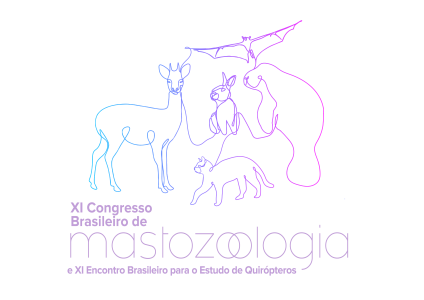Dados do Trabalho
Título:
SMALL MAMMALS FROM THE CAATINGA: A HOT AND FURRY DATASET
Resumo:
The mammalian fauna of the Caatinga biome, especially the small mammals, is still poorly researched by scientists in Brazil. Due to the few information available in the scientific literature and the low reliability of online databases, we aim to compile an informative dataset of the occurrence of small non-flying mammals (Didelphimorphia and Rodentia) at the Caatinga biome. We used records from mammal collections, papers, books, grey literature (theses and dissertations) and our unpublished data, and prioritized records with vouchers. All localities were checked for accuracy and precision, and the taxonomic status of the species was verified by the expert authors. For the literature records, the taxonomic update was based on the most recent and accepted revision, regarding the biogeographic distribution and karyotype. Our dataset raised 47 native species (besides three exotic rodents, Rattus rattus, Rattus norvergicus and Mus musculus), 12 marsupials and 35 rodents, in 3133 records from 816 localities. Among them, 1808 (57.71%) of the records are from environmental consultancy activities, highlighting the importance of these activities for scientific data; 104 (3.32%) are from the National Plague Service (SNP), and 95 (3.03%) are from other zoonoses’ studies and, which is linked to the importance of this group of mammals in public health issues, especially rodents. The last checklist of mammals from the Caatinga made by Carmignotto and Astúa in 2017 has 48 species (35 rodents and 13 marsupials), and includes Rhipidomys cearanus, Guerlinguetus brasiliensis, Cavia aperea and Metachirus nudicaudatus, but none of these last are present in our dataset. We treat R. cearanus as a synonym of R. mastacalis, although there has been a consensus that specimens from Serra de Ibiapaba (CE) may represent a new species; G. brasiliensis and C. aperea are cited on literature only as interview records and we did not find any voucher from the Caatinga; and the M. nudicaudatus record is from an area now classified as Cerrado according to the new limits of the Caatinga. In this dataset, we have added to the list the rodents Calomys mattevii, Holochilus oxe and Nectomys squamipes. This is the first mammal dataset for the Caatinga biome and it has lots of potential applications in studies such as habitat/microhabitat use, landscape ecology, macroecology, biogeography and conservation.
Keywords: Data paper; Semiarid; Rodent; Marsupial; Neotropical biodiversity.
Financiamento:
Área
Inventário de espécies
Autores
Anna Ludmilla Costa-Pinto, Adriana Bocchiglieri, Lena Geise, Ana Cláudia Delciellos, Ana Cláudia Malhado, Gabriela Paise, Aldo Caccavo, Diogo Loretto, Rafael Gustavo Becker, Rebeca Mascarenhas Fonseca Barreto, Richard James Ladle, Ricardo Siqueira Bovendorp
